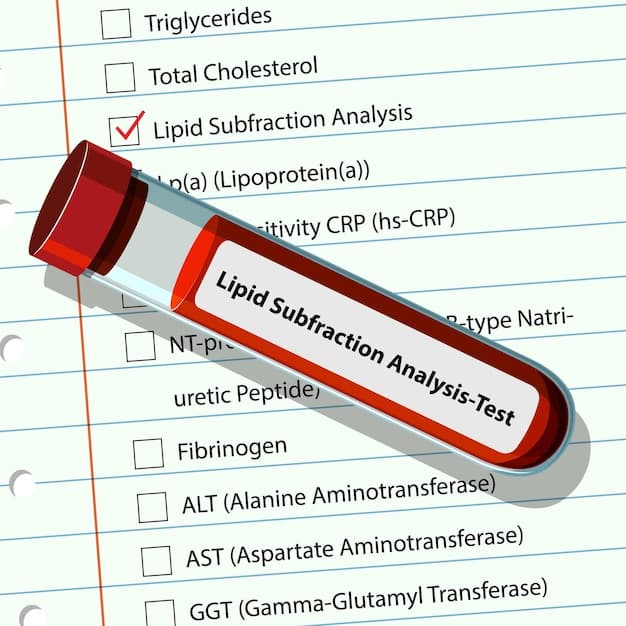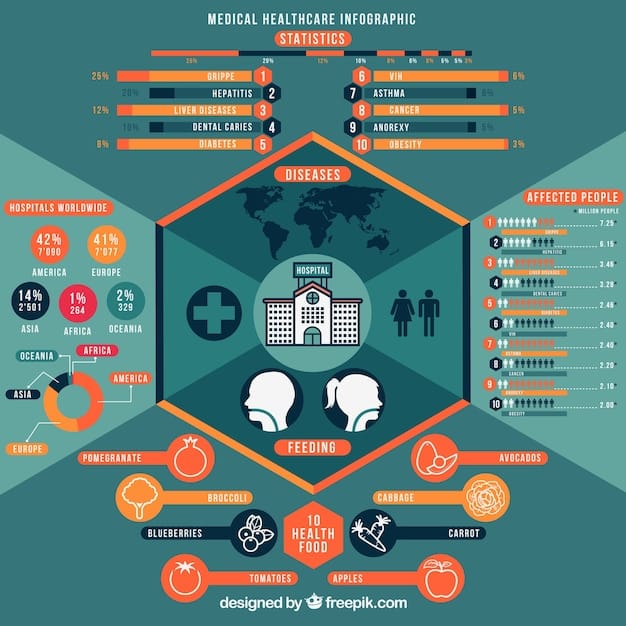Navigating the Biotech Startup Regulatory Landscape: FDA Guidelines Explained

Biotech startup regulatory landscape requires careful navigation through the latest FDA guidelines, which ensure product safety and efficacy, impacting everything from clinical trials to market approval.
Entering the biotech industry as a startup requires more than just groundbreaking science; understanding the biotech startup regulatory landscape is crucial. This article delves into the latest FDA guidelines, providing a roadmap for navigating the complex regulatory paths and ensuring your innovative products meet the required standards for approval in the US.
Understanding the FDA’s Role in Biotech Regulation
The U.S. Food and Drug Administration (FDA) plays a pivotal role in regulating the biotech industry, ensuring that all medical products, including drugs, biologics, and medical devices, are safe and effective. For biotech startups, understanding the FDA’s role is the first step in navigating the regulatory maze.
FDA’s Mission and Responsibilities
The FDA’s primary mission revolves around protecting public health by regulating various products. This includes pre-market approval, monitoring manufacturing processes, and post-market surveillance. Knowing the FDA’s responsibilities helps startups align their product development with regulatory expectations.
- Ensuring safety and effectiveness of drugs, biologics, and medical devices.
- Overseeing the manufacturing process to maintain product quality.
- Conducting post-market surveillance to identify potential safety issues.
Compliance with FDA regulations is not merely a formality; it is essential for accessing the U.S. market. The regulatory landscape can seem complicated, but understanding the FDA’s role helps to streamline the compliance process.

Key Regulatory Pathways for Biotech Products
Navigating the FDA requires understanding the different regulatory pathways applicable to biotech products. Each pathway has specific requirements and timelines, and choosing the right path can significantly affect a product’s time to market.
New Drug Application (NDA)
The NDA is used for new drugs that have not been previously approved. This pathway requires extensive clinical trials to demonstrate safety and efficacy. For a biotech startup, the NDA process is a significant undertaking, often requiring substantial investment and expertise.
Biologics License Application (BLA)
The BLA is designed for biologic products, such as vaccines, blood products, and gene therapies. The requirements are rigorous, similar to the NDA, but also consider the unique complexities of biologic manufacturing and testing.
- Preclinical testing to evaluate safety and efficacy.
- Clinical trials to demonstrate effectiveness in humans.
- Chemistry, Manufacturing, and Controls (CMC) data to ensure product consistency.
Choosing the correct regulatory pathway is crucial for a biotech startup. Understanding the nuances of each option helps streamline the approval process and avoid costly delays.
Preclinical Studies: Laying the Groundwork for Approval
Before human clinical trials can commence, biotech startups must conduct preclinical studies. These studies provide essential information about the product’s safety and potential efficacy, guiding the development process and informing the design of clinical trials.
Importance of Robust Preclinical Data
Solid preclinical data is the foundation upon which clinical trials are built. These studies simulate the drug’s effects using laboratory and animal models to predict reactions inside the human body. Properly designed and executed preclinical studies can prevent future failure in clinical trials.
Essential Preclinical Studies
- Toxicology studies to identify potential adverse effects.
- Pharmacokinetics studies to assess drug absorption, distribution, metabolism, and excretion.
- Efficacy studies using animal models to demonstrate the drug’s effect.
Preclinical studies provide critical insights that inform the development strategy. Investing in high-quality preclinical research can significantly increase the chances of successful clinical outcomes.
Clinical Trials: Demonstrating Safety and Efficacy
Clinical trials are the next crucial step after preclinical studies, where the safety and efficacy of a biotech product are tested in humans. Navigating the clinical trial phases requires careful planning, execution, and adherence to regulatory guidelines.
Clinical Trial Phases
Clinical trials are typically conducted in three phases to gather enough data on the drug, before gaining final approvals. Each phase has unique objectives and requires close adherence to regulations.
- Phase 1: Assess safety and dosage in a small group of healthy volunteers.
- Phase 2: Evaluate efficacy and side effects in a larger group of patients.
- Phase 3: Confirm efficacy, monitor side effects, and compare to other treatments in a large patient population.
Successful completion of clinical trials is a major milestone for any biotech startup. The data collected can potentially lead to FDA approval and market access.

Navigating the Chemistry, Manufacturing, and Controls (CMC) Requirements
Ensuring the quality and consistency of biotech products involves adhering to Chemistry, Manufacturing, and Controls (CMC) requirements laid out by the FDA. These requirements cover all aspects of manufacturing, from raw materials to final product release.
Importance of CMC Compliance
Compliance with CMC guidelines ensures that each batch of a biotech product is consistent in terms of composition, quality, and purity. These standards are also a guarantee for the safety, efficacy, and reliability of the pharmaceutical product.
Key CMC Considerations
The key to following CMC guidelines can be addressed with these few key considerations. It’s important to note that this is a simplified list – consult with an expert when dealing with pharmaceutical products.
- Establishing robust manufacturing processes.
- Implementing comprehensive quality control procedures.
- Maintaining detailed documentation of all manufacturing activities.
Biotech startups must invest in the necessary infrastructure and expertise to meet CMC requirements. Compliance with these rules can significantly impact a product’s chances of regulatory success.
Post-Market Surveillance and Compliance
The regulatory journey does not end with FDA approval. Post-market surveillance is crucial for monitoring the continued safety and effectiveness of biotech products once they are available to the public. Biotech startups must understand their obligations for post-market compliance.
Responsibilities for Post-Market Surveillance
The FDA requires biotech companies to report any unexpected or adverse events associated with their products after they reach the market. This data is used to monitor ongoing safety and efficacy.
- Reporting adverse events and product complaints.
- Conducting post-market studies as required by the FDA.
- Implementing corrective actions in response to safety concerns.
Post-market surveillance is an ongoing responsibility, and biotech startups are expected to maintain vigilance to ensure their products continue to meet regulatory standards.
| Key Point | Brief Description |
|---|---|
| 🔬 FDA’s Role | Ensures safety and efficacy of medical products. |
| 🧪 Regulatory Pathways | NDAs and BLAs affect product approval speed. |
| 📊 Clinical Trials | Phases I-III test product safety and effectiveness. |
| 🛡️ Post-Market | Monitor products for ongoing safety and compliance. |
FAQ
▼
The FDA’s main goal is to ensure biotech products are safe, effective, and meet quality standards before they’re available to the public, protecting patient health.
▼
A Biologics License Application (BLA) is required for biologic products like vaccines and gene therapies, ensuring these complex products meet stringent safety and efficacy standards.
▼
Preclinical studies help determine if a biotech product is safe and effective before human trials. These studies can save time and resources by preventing failure in later phases.
▼
CMC (Chemistry, Manufacturing, and Controls) requirements ensure biotech products are consistently high quality, which is essential for safety and efficacy consistency across batches.
▼
Post-market surveillance involves monitoring a product after it’s available to the public, which includes reporting adverse events. This is to ensure ongoing safety and effectiveness of the product.
Conclusion
Navigating the regulatory landscape is a crucial aspect of developing a successful biotech startup. By understanding the FDA’s role, following appropriate regulatory pathways, and adhering to CMC requirements, biotech startups can bring innovative and safe products to market.





